Cadbury Crisis Management Case Study: Preserving Trust in Times of Crisis
In the realm of beloved chocolate brands, Cadbury has long held a cherished place in the hearts and taste buds of consumers worldwide.
However, even the most esteemed companies are not immune to crises that can pose significant threats to their reputation.
Effective crisis management becomes paramount in such moments, serving as the linchpin in preserving brand equity and consumer trust.
In this blog post, we delve into the realm of Cadbury’s crisis management, exploring a notable incident that tested the brand’s resilience and examining the strategies they employed to navigate the storm.
By understanding Cadbury’s response and the lessons gleaned from their experience, we can gain valuable insights into crisis management in the food industry and the critical importance of safeguarding brand reputation.
The Cadbury crisis: an overview
In October 2003, just a month before the festive season of Diwali, customers in Mumbai reported the discovery of worms in Cadbury Dairy Milk chocolates. Responding promptly, the Maharashtra Food and Drug Administration (FDA) took action by seizing chocolate stocks produced at Cadbury’s Pune plant.
Cadbury defended itself by stating that the infestation could not have occurred during the manufacturing process and suggested that poor storage at retailers might have been the cause of the reported worm cases.
However, the FDA remained unconvinced. Uttam Khobragade, the FDA commissioner, expressed doubts, stating, “While it was presumed that worms entered the chocolates during storage, what about the packaging? If the packaging was not proper or airtight, it could be considered a manufacturing defect due to unhygienic conditions or improper packaging.”
This exchange of allegations and counter-allegations between Cadbury and the FDA led to negative publicity that significantly impacted Cadbury’s sales. During a time when Cadbury typically experiences a 15% sales boost due to festive season demand, their sales dropped by 30%. As a result, Cadbury’s advertising went off air for a month and a half following Diwali, as consumers seemed to lose interest in their chocolate cravings.
Facing intense scrutiny, Cadbury took action by launching an education initiative called “Vishwa’s” in October itself. This initiative aimed to educate 190,000 retailers in key states. However, it was what Cadbury did in January 2004 that truly helped restore the brand’s reputation.
Investing around Rs 15 crore (Rs 150 million), Cadbury revamped the packaging of Dairy Milk by introducing imported machinery. The new metallic poly-flow packaging, despite being costlier by 10-15%, did not lead to a price increase for the product.
Bharat Puri, managing director of Cadbury’s India, stated, “Although we are addressing a few bars out of the 30 million we sell every month, we believe that as a responsible company, consumers should have complete faith in our products. So, even if it requires significant investment and change, we must not let consumer confidence erode.”
Simultaneously, Cadbury enlisted the support of brand ambassador Amitabh Bachchan for extensive endorsement, with the actor risking his personal reputation for the brand.
Cadbury also increased advertising spending for the January to March quarter by more than 15%. The brand’s recovery began in May 2004, and by June, Cadbury claimed that consumer confidence had been restored. Experts believe that Cadbury’s success was due to their proactive and direct approach in addressing the crisis. Moreover, consumers were more forgiving because of the emotional connection they had with the brand in India.
Explanation of the potential impact on Cadbury’s reputation and consumer trust
The potential impact of the crisis on Cadbury’s reputation and consumer trust cannot be overstated. Cadbury had spent years cultivating a strong brand image built on trust, quality, and indulgence.
Consumers who had long associated Cadbury with delightful moments and safe indulgence were suddenly confronted with doubts and concerns about the integrity of the brand.
The presence of foreign objects in their beloved chocolate bars not only raised immediate health and safety worries but also shook the trust that consumers had placed in Cadbury’s manufacturing processes.
The crisis threatened to erode the emotional connection between Cadbury and its customers, potentially leading to long-lasting damage to the brand’s reputation and a loss of consumer loyalty. The way Cadbury handled the crisis would be critical in determining whether they could restore faith in their products and reassure customers that their commitment to quality and safety remained unwavering.

Cadbury’s Response: Swift and Transparent Action
Here are three points that explain the response of Cadbury to the crisis:
A. Immediate actions taken by Cadbury to address the crisis
Recognizing the urgency of the situation, Cadbury swiftly sprang into action to address the crisis and mitigate its impact on consumer trust. Their response was marked by a combination of transparency, accountability, and proactive measures. First and foremost, Cadbury initiated an immediate recall of the affected products from the market, demonstrating their commitment to ensuring consumer safety.
This recall was accompanied by clear and concise public announcements, both through traditional media channels and online platforms, informing consumers about the issue and advising them to refrain from consuming the affected products.
Cadbury launched an internal investigation in collaboration with independent third-party experts. This step aimed to determine how the foreign objects had made their way into the production process and identify any potential lapses in quality control.
In addition to the recall and investigation, Cadbury established a dedicated consumer helpline and email contact to address any concerns or inquiries from customers. This direct line of communication allowed affected individuals to seek information and assistance, demonstrating Cadbury’s commitment to maintaining open dialogue with their consumer base.
Moreover, Cadbury proactively engaged with regulatory bodies, such as food safety authorities and government agencies, to ensure compliance with relevant regulations and collaborate on resolving the crisis. This collaboration helped in conducting thorough investigations, sharing information, and implementing corrective measures.
Throughout their response, Cadbury remained transparent, providing regular updates to the public and stakeholders on the progress made in resolving the crisis. By openly acknowledging the issue and taking swift action, Cadbury aimed to rebuild consumer trust and demonstrate their commitment to the highest standards of product safety and quality.
B. Emphasis on transparency, open communication, and acknowledgement of the issue
Cadbury recognized the critical role of transparency, open communication, and sincere acknowledgement in their crisis management strategy. Understanding that silence or evasion could further erode consumer trust, they chose a different path.
From the onset, Cadbury openly acknowledged the issue, taking full responsibility for the presence of foreign objects in their products. They did not attempt to downplay or minimize the severity of the situation, but rather acknowledged the potential risks and concerns that consumers may have.
To ensure transparent communication, Cadbury provided regular updates to the public and stakeholders about the progress of their investigations, steps taken to address the issue, and any findings or developments. This transparency helped to build confidence among consumers that Cadbury was actively working to rectify the situation and prevent similar incidents in the future.
Moreover, Cadbury prioritized open communication channels with their consumers. They promptly established a dedicated helpline and email contact to address individual inquiries and concerns. By providing accessible means for consumers to voice their questions or fears, Cadbury demonstrated a commitment to engaging in two-way communication and actively listening to their customers.
Engagement with customers, media, and regulatory bodies
Cadbury demonstrated proactive engagement with various stakeholders throughout the crisis, including customers, media, and regulatory bodies. Here are some examples of their efforts:
- Customers: Cadbury promptly set up a dedicated helpline and email contact to address customer inquiries, concerns, and feedback. This direct line of communication allowed affected individuals to seek information, share their experiences, and receive assistance from Cadbury’s customer service team.
- Media: Cadbury issued press releases and media statements to communicate their response to the crisis, including the immediate recall, investigation, and measures being implemented to ensure product safety. These official statements aimed to provide accurate information and address media inquiries promptly.
- Regulatory bodies: Cadbury collaborated closely with relevant food safety authorities and regulatory bodies to ensure compliance with regulations and to share information regarding the crisis. This collaboration helped in conducting thorough investigations and implementing appropriate corrective actions.
Evaluation of Cadbury’s crisis management approach and its effectiveness
Cadbury’s crisis management approach can be evaluated as highly effective based on several key factors:
- Swift and proactive response: Cadbury’s immediate actions, including the recall of affected products and launching an internal investigation, demonstrated a sense of urgency and a commitment to addressing the crisis promptly. This swift response helped contain the situation and prevent further harm to consumers.
- Transparency and open communication: Cadbury’s emphasis on transparency and open communication was commendable. They openly acknowledged the issue, took responsibility, and provided regular updates to the public, customers, media, and regulatory bodies. This transparency fostered trust and allowed stakeholders to stay informed throughout the crisis.
- Stakeholder engagement: Cadbury actively engaged with stakeholders such as customers, media, and regulatory bodies. They established a dedicated helpline and email contact for customers, responded to media inquiries, and collaborated with regulatory authorities. This proactive engagement demonstrated a commitment to listening, addressing concerns, and working collaboratively to resolve the crisis.
- Accountability and commitment to quality: By taking responsibility for the contamination incident, Cadbury showed accountability for the lapse in their manufacturing processes. They acknowledged the potential harm caused to consumers and reassured them of their commitment to maintaining the highest standards of quality and safety.
- Learning and improvement: Cadbury’s crisis management approach also involved conducting internal investigations, collaborating with third-party experts, and implementing corrective measures. This commitment to learning from the incident and making necessary improvements indicated a proactive approach to preventing future occurrences and continuously enhancing product safety.
Identification of key lessons and best practices for crisis management in the food industry
Identification of key lessons and best practices for crisis management in the food industry:
- Prioritize consumer safety: The primary focus during a crisis in the food industry should be on ensuring consumer safety. Swift actions, such as recalls and investigations, must be taken to address any potential risks and protect consumers from harm.
- Transparency and open communication: Transparency is crucial in maintaining trust during a crisis. Companies should openly acknowledge the issue, provide timely and accurate information to stakeholders, and communicate updates regularly. This includes engaging with customers, media, and regulatory bodies to address concerns and share progress.
- Swift response and proactive measures: Time is of the essence in crisis management. Acting swiftly to contain the issue, launching investigations, and implementing corrective actions demonstrate a commitment to resolving the crisis effectively and minimizing its impact.
- Establish a dedicated crisis management team: Having a designated crisis management team with clear roles and responsibilities is essential. This team should be equipped to handle crisis situations, make quick decisions, and coordinate communication across various channels.
- Collaborate with stakeholders: Engage with relevant stakeholders, including customers, media, and regulatory bodies. Collaborating with regulatory authorities ensures compliance and regulatory support, while open communication with customers and media helps address concerns, provide accurate information, and rebuild trust.
- Learn from the crisis: Conduct thorough investigations to identify the root cause of the crisis. This allows for improvements in manufacturing processes, quality control measures, and overall safety protocols to prevent similar incidents in the future. Continuously learning and adapting based on the crisis experience is vital.
- Preparedness through crisis simulations: Conducting crisis simulations and drills in advance can help organizations prepare for potential crises. These simulations allow teams to practice their response strategies, identify gaps, and refine their crisis management plans.
- Monitor and respond to social media : Social media plays a significant role in crisis communication. Monitor social media platforms to gauge public sentiment, address customer concerns, and promptly respond to queries or complaints.
- Maintain brand consistency: During a crisis, it is essential to maintain consistency in messaging and actions across all communication channels. This consistency helps in building trust and avoiding confusion among stakeholders.
- Rebuild trust through actions: Regaining consumer trust takes time. Implement measures to enhance product safety, quality control, and quality assurance processes. Launch consumer-centric initiatives and communicate these actions to demonstrate the brand’s commitment to customer satisfaction and safety.
Final Words
Cadbury’s crisis management approach serves as an excellent example of effective strategies and best practices in the food industry. By swiftly addressing the crisis, prioritizing consumer safety, and embracing transparency, Cadbury demonstrated their commitment to their customers and their brand integrity.
The lessons learned from Cadbury’s crisis management are applicable to any organization in the food industry. Prioritizing consumer safety should always be the guiding principle, followed by open communication with stakeholders and a proactive approach to resolving the issue.
Remember, a crisis can be an opportunity to showcase a company’s resilience and commitment to its customers. By implementing these best practices and being prepared, organizations can navigate crises with greater confidence, protect their brand reputation, and rebuild trust even in the face of adversity.
About The Author
Tahir Abbas
Related posts.

20 Best Change Management Tools

What is a Change Management Process?

Disruptive Startups Meaning Explained with Examples
MBA Knowledge Base
Business • Management • Technology
Home » Management Case Studies » Case Study: Cadbury Crisis Management (Worm Controversy)
Case Study: Cadbury Crisis Management (Worm Controversy)
In India chocolate consumption was very low in the early 90’s but as the decade advanced the consumption drastically increased. The late 90’s witnessed a good chocolate market condition. The chocolate market in India is dominated by two multinational companies — Cadbury and Nestle. The national companies – Amul and Campco are other candidates in this race. Cadbury holds more than 70% of the total share of the market. Nestle has emerged by holding almost 20% of the total share. Apart from chocolate segment, there is also a big confectionery segment which is flooded by companies like Parry’s, Ravalgaon, Candico and Nutrine. All these are leading national players. The multinational companies like the Cadbury, Nestle and Perfetti are the new entrants in the sugar confectionery market. (Management paradise) There are several others which have a minor share in these two segments. According to statistics, the chocolate consumption in India is extremely low. If per capita consumption is considered, it comes to only 160gms in the urban areas. This amount is very low compared to the developed countries where the per capita consumption is more than 8-10kg. Observing this fact it would not be appropriate to consider the rural areas of India as it will be extremely low. This low consumption is owing to the notion behind consuming chocolates. Indians eat chocolates as indulgence and not as snack food. The major target population is the children. India has witnessed a slow growth rate of about 10% pa from the 70’s to the 80’s. But as the century advanced the market stagnated. This was the time when Cadbury launched its product- Dairy Milk as an anytime product rather than an occasional luxury. All the advertisements of Dairy Milk paid a full attention to adults and not children. And this proved to be the major breakthrough for Cadbury as it tried to break the conventional ideas of the Indians about chocolate.
The Worm Controversy
On October 2003, just a month before Diwali, the Food and Drug Administration Commissioner received complaints about infestation in two bars of Cadbury Dairy Milk, Cadbury India’s flagship brand with over 70% market share. He ordered an enquiry and went directly to the media with a statement. Over the following 3-week period, resultant adverse media coverage touched close to 1000 clips in print and 120 on TV news channels. In India, where Cadbury is synonymous with chocolate, the company’s reputation and credibility was under intense scrutiny. Sales volumes came down drastically in the first 10 weeks, which was the festival season; retailer stocking and display dropped, employee morale – especially that of the sales team – was shaken. The challenge was to restore confidence in the key stakeholders (consumers, trade and employees, particularly the sales team) and build back credibility for the corporate brand through the same channels (the media) that had questioned it.

In defense, Cadbury issued a statement that the infestation was not possible at the manufacturing stage and poor storage at the retailers was the most likely cause of the reported case of worms. But the FDA didn’t buy that. FDA commisioner, Uttam Khobragade told CNBC-TV18, “It was presumed that worms got into it at the storage level, but then what about the packing – packaging was not proper or airtight, either ways it’s a manufacturing defect with unhygienic conditions or improper packaging.”
That was followed by allegations and counter-allegations between Cadbury and FDA. The heat of negative publicity melted Cadbury’s sales by 30 per cent, at a time when it sees a festive spike of 15 per cent.
For the first time, Cadbury’s advertising went off air for a month and a half after Diwali, following the controversy. Consumers seemed to ignore their chocolate cravings.
Remedy for the Worm Controversy
A focused and intense communications program was implemented over the next six months to rebuild credibility and restore confidence among the key stakeholders. The results:
- In media, the key message that infestation was a storage-linked problem, not manufacturing related , found widespread acceptance. Across the board, media carried Cadbury’s point-of-view on the issue.
- Sales volumes climbed back to almost to pre-crisis levels eight weeks after the launch of new packaging — a concrete step taken by the company to minimize the incidence of infestation. This reflected consumer confidence in the brand and the company.
- There was significant upward movement in ratings amongst consumers on parameters like company’s image, responsiveness of company and behavioral parameters like intention to buy Cadbury chocolates.
The last two helped to restore faith in the corporate brand among the trade and employees.
Marketing Challenges and Objectives
The incident came close on the heels of a cola controversy where a scientific laboratory declared colas unsafe due to high levels of pesticide. The jury was still out on that issue and so this incident acquired political overtones with parties decrying Cadbury as an irresponsible MNC. Andrea Dawson- Shepherd, Global Corporate Communication Counsel, Cadbury Schweppes called it ‘the worst worm infestation-related crisis anywhere in the world’.
The immediate objective was to get the following key messages across:
- Infestation could never occur at the manufacturing stage
- The problem was storage linked; this without alienating trade channels
- Cadbury Dairy Milk continued to be safe for consumption
The challenge was to restore confidence in the key stakeholders (trade and employees, particularly salespersons) and build back credibility for the corporate brand through the same channels (the media) that questioned it.
It was decided from the start to address the issue head-on and take whatever steps were necessary to restore confidence. Having historically maintained a low profile with the media and let its brands and its performance speak for it, the company began to cultivate relationships with the media and turn it into an ally and a credible, independent endorser to rebuild stakeholder confidence.
Phase 1: Presenting Cadbury’s View (October-December 2003)
The day the crisis broke, the agency set up a media desk to ensure that no media query went unanswered. From Day 1 every story carried Cadbury’s point of view. At the first media briefing organised by the agency, the Cadbury’s Managing Director addressed consumer concerns with the following key messages:
- Infestation is a storage linked problem.
- It is safe to eat Cadbury chocolates.
- Consumers must exercise the same care in purchasing a chocolate as they would when buying any food item.
At a second media briefing about two weeks after the first incident was reported, Cadbury announced significant steps to restore consumer confidence called Project Vishwas (Trust), this entailed:
- A retail monitoring and education program undertaken on a war footing to address storage problems.
- Significant packaging changes to ‘reduce dependency on storage conditions as much as possible’ –to be launched within two months.
An Editorial Outreach program with 31 media editors across 5 most affected cities was orchestrated by the agency to get senior Cadbury spokespeople to share their version of events in one-on-one meetings. The trade, and consumers, were reached nationally through a press ad ‘Facts about Cadbury’, released in 55 publications in 11 languages. It presented facts about Cadbury manufacturing and storage and highlighted corrective steps being taken by the company. This was a public statement of the corporate stand on the issue. The trade was supported with posters and leaflets to help them share Cadbury point-of-view with their customers. A response cell with a toll free number and an e-mail id were put in place to give trade a means to directly contact the company with any issues they faced- reinforcing the company’s commitment to quality. From the beginning, a series of town hall meetings were held with senior managers addressing employees
to ensure they were updated on the proactive actions being taken by Cadbury to manage media, help trade and ensure future occurrences of such incidents were kept to the minimum. Regular email updates from the MD were also used to communicate the company’s point of view and to ensure consistency of messaging since employees are the company’s ambassadors.
Phase 2: Packaging Change (January- March 2004)
The new ‘purity sealed’ packaging was launched in January 2004. By investing up to Rs 15 crore (Rs 150 million) on imported machinery, Cadbury’s revamped the packaging of Dairy Milk. The metallic poly-flow, was costlier by 10-15 per cent, but Cadbury didn’t hike the pack price.This entailed double wrapping for maximum protection to reducing the possibility of infestation. This was a big step involving investment of millions of dollars and getting on stream a production process in 8 weeks, that would normally take about six months. To communicate these significant changes the company was making, Cadbury brought in a brand ambassador to reinforce the credibility that the company had demonstrated through its actions. Amitabh Bachchan , a legendary Indian film star, was chosen, as he embodied the values of Cadbury as a brand and connected with all of India – mothers, teenagers, children, media persons and trader partners.

A media conference was organized in Mumbai to launch the new packaging. And this was followed with press conferences in cities worst affected by the crisis – Pune and Nagpur in Maharashtra and Cochin in Kerala. In these conferences, media persons were encouraged to compare the old and new packs with an innovative comparison kit and experience the significant changes in packaging first hand. An audio visual with a message from Amitabh Bachchan, was beamed to build credibility and excitement. Given that much of the damage had come from television coverage, a video news release with packaging shots and factory shots was given to television channels to control the visual messaging. Simultaneously, senior Cadbury spokespersons had one-on-ones with the Editors of the Outreach program initiated in November 2003.
Another audio visual with a message from the star was used in a series of sales conferences to enthuse and reassure salespersons. And this helped to rebuild confidence in the salespersons to go and sell the product more convincingly and confidently to the trade. The announcement of the new pack was done through a testimonial advertisement on TV called ‘Sincerity’. It consciously addressed the problem head-on, with the superstar talking straight into camera about how before doing the ad he first convinced himself about the quality of Cadbury chocolates by visiting the factory. Consumers respected the brand for not skirting the issue but acknowledging it and giving a solution to the problem. This was Public Relations using a TV Commercial to get key messages across!
Campaign Results:
- Media Coverage : The media relationship effort clearly helped in making media accept that the infestation was genuinely caused by storage-linked problems. From the start, all media reports carried the Cadbury’s point-of-view. Bad news automatically gets great coverage. However, the agency helped Cadbury get a total of 378 clips in over 11 languages covering the new packaging, and its benefits, in January 2004. The Business Today clip is a typical representation of the changed media perception and a better understanding of the problem over a three month period.
- Sales : Sales volumes, which declined drastically between week 1 and week 10 of crisis, climbed back almost to the pre-incident levels by week. within 8 weeks of introduction of new packaging and communication. This is a clear reflection of restoration of consumer and hence trade confidence in the corporate brand.
- Image : There was significant upward movement in ratings amongst consumers on parameters like company image, responsiveness of company and behavioral parameters like intention to buy Cadbury chocolates. While the new product introduction and advertising had their role to play in the changing consumer perceptions, the media’s positive coverage and the trade’s positive pre-disposition played a huge part in helping Cadbury regain its reputation in the market.
Role of Public Relations
Public Relations concerns the total communications of your total organization/group of organizations. It is unlike advertising, where you are sharing skills of planning, creative and media buying teams with an out-sourced agency. PR calls for a very intimate understanding of the total inner workings of your organisation at all levels – workers to Board levels. It requires the integration of knowledge and communications. It is not a part time job for a Marketing Services Manager. If it is to work and serve the larger objective, the PR department should be independent, servicing others like production, personnel, marketing, finance, corporate agendas. Therefore, the PR Head should be part of the top management team – reporting directly to the CEO. He also needs to share everyone’s confidences.
The PR department of Cadbury’s played a very effective role in managing the reputation and keeping up the goodwill of the company.
Related posts:
- Case Study: Kraft’s Takeover of Cadbury
- Case Study: Qantas Crisis
- Case Study: The Daewoo Group and the Asian Financial Crisis
- Case Study: The Coca-Cola Company Struggles with Ethical Crisis
- Case Study of Burger King: Achieving Competitive Advantage through Quality Management
- Case Study: Supply Chain Management of Walmart
- Case Study: Management Information System at Dell
- Case Study: Hospital Management System (HMS)
- Case Study: Inventory Management Practices at Walmart
- Case Study: Human Resource Management at BMW
Leave a Reply Cancel reply
Your email address will not be published. Required fields are marked *

Cadbury’s Crisis and Comeback: Managing the Worm Infestation Scandal

Table of Contents
Imagine finding something unexpected in your favorite chocolate bar — something that wriggles. This was the shocking reality for Cadbury in 2003 when consumers in India found their candy bars infested with worms. The iconic confectionery brand faced a nightmarish crisis that threatened its reputation and consumer trust . But how did Cadbury tackle this public relations disaster, and what can we learn from their strategy? Let’s unwrap the layers of this case study and find out.
The emergence of a crisis
It began as isolated incidents, whispers of wriggling worms in Cadbury Dairy Milk bars. But soon, the murmurs became headlines, and Cadbury’s flagship product was under siege. Consumers were outraged, and sales plummeted. The crisis was not just about contaminated chocolate — it was a question of Cadbury’s integrity and the safety of its products. The initial response was sluggish, and accusations of negligence started to mount. It was clear that something had to change, and fast.
The turnaround strategy
Realizing the gravity of the situation, Cadbury sprang into action. The company knew it needed a multi-faceted approach to win back hearts and minds. Here’s how they did it:
Revamping packaging
One of the first steps Cadbury took was to overhaul its packaging. The standard foil wrapping was no match for India’s tropical climate, which was partly blamed for the infestation. In a move to reassure consumers about product safety, Cadbury introduced a more secure, heat-sealed packaging that acted as an impenetrable barrier to pests.
Modernizing production
Next, Cadbury invested in state-of-the-art machinery. They imported new manufacturing equipment to enhance quality control and minimize any risks of contamination. These improvements were not just functional but also served as a symbol of Cadbury’s commitment to maintaining high standards.
Winning back trust with “ Project Vishwas ”
Launching a PR campaign: Acknowledging the need for effective communication, Cadbury launched “Project Vishwas” (Vishwas means ‘trust’ in Hindi). This extensive public relations campaign was designed to educate retailers and rebuild consumer confidence.
Enlisting a beloved icon: To give the campaign a credible face, Cadbury enlisted Bollywood megastar Amitabh Bachchan . His widespread appeal and trustworthy persona were pivotal in restoring faith in the brand. Bachchan’s endorsement reassured the public that Cadbury chocolates were indeed safe to consume.
Engaging directly with retailers and consumers
Cadbury didn’t just rely on media campaigns; they took to the streets. Company representatives met with thousands of retailers, providing material assistance to enhance storage conditions and educating them on maintaining product integrity. They also organized consumer outreach programs to directly address concerns and demonstrate their new safety measures.
Lessons learned
The Cadbury worm infestation crisis is a textbook example of why timely, transparent, and comprehensive strategies are essential in stakeholders .">crisis management . Here are some key takeaways from their experience:
Responsiveness is crucial
While Cadbury’s initial reaction was lacking in urgency, they quickly corrected course. This teaches us that acknowledging a problem swiftly can prevent a bad situation from becoming worse.
Transparency builds trust
By being open about the steps they were taking to address the issue, Cadbury rebuilt trust with consumers. Transparency is non-negotiable when it comes to winning back customer confidence.
Adaptability is a strength
The crisis forced Cadbury to adapt — from changing their packaging to upgrading their machinery. Flexibility in the face of adversity is a powerful attribute for any business.
Effective communication is key
Project Vishwas was successful because it communicated effectively with all stakeholders involved. The campaign’s messaging was clear, consistent, and reassuring, which is vital in any crisis communication strategy.
The aftermath and recovery
As a result of these efforts, Cadbury managed to turn a potential disaster into a story of successful crisis management. Sales eventually rebounded, and the brand’s image was restored. The worm infestation incident became a case study on overcoming adversity through strategic action and strong leadership.
The Cadbury crisis of 2003 offers invaluable insights into the importance of crisis management for businesses. By examining their response, we can understand the necessity of swift action, the power of a comprehensive communication strategy, and the benefits of investing in quality control and consumer trust. It’s a testament to the resilience of a brand that can not only survive a crisis but emerge stronger from it.
What do you think? Could Cadbury have handled the situation better from the outset? In what ways do you think modern brands can learn from Cadbury’s experience during a crisis?
How useful was this post?
Click on a star to rate it!
Average rating 0 / 5. Vote count: 0
No votes so far! Be the first to rate this post.
We are sorry that this post was not useful for you!
Let us improve this post!
Tell us how we can improve this post?
Submit a Comment Cancel reply
Your email address will not be published. Required fields are marked *
Save my name, email, and website in this browser for the next time I comment.
Submit Comment
Media, Ethics and Laws
1 Principles of media ethics
- Ethics: Concept and Theories
- Why Media Ethics?
- Media Form and Its Freedom
- Media and Market Pressures
- Media Ethics in India: Some Breaches
2 News media and ethical concerns
- What are News Media’s Ethical Concerns?
- Causes of Ethical Concerns
- Universal Ethical Concerns
- Ethical Issues
- How to Address Ethical Concerns
3 Media ethics and self regulation
- Concept of Self-Regulation
- Codes of Ethics
- Essential Ethical Values
- Emerging Ethical Areas
4 New media ethics
- Definition of New Media Ethics
- Rights and Ethical Responsibilities of Content Creators
- Content Curation and Limits to Sharing
- Rights and Ethics of Online Readers
5 Indian constitution
- Indian Constitution
6 Media laws and constitutional framework
- Freedom of Speech and Expression
- Law of Defamation
- Journalistic Defences under Law of Defamation
- Official Secrets Act 1923
- Contempt of Legislature
7 Media laws and regulatory framework
- Need for Media Laws and Regulatory Framework
- Press and Registration of Books Act 1867
- Working Journalists Act 1955
- Press Council of India Act 1978
8 Initiatives in media laws
- Intellectual Property Rights
- Contempt of Courts Act 1971
- Right to Information
- Code for Television
9 Intellectual Property Rights
- Concept, Nature, and Scope of IPR
- Evolution and Growth of IPR
- Components of IPR
10 Copyright Law
- Definition of Copyright
- Main Features of Copyright
- Registration and Assignment of Copyright
- Licensing of Copyright
- Infringement of Copyright
11 Cyber Law
- Concept of Cyber space
- International and National Cyber Laws
- Information Technology Act 2000 as amended
- Cyber Crimes
12 Right to information
- Right to Information: Concept & Evolution
- Right to Information Act 2005
- Institutions Covered under RTI
- Impact of Right to Information
- Constraints in Implementing RTI
13 Advertising ethics and laws
- Advertising Laws in India
- Ethics of Advertising
- Advertising Codes
14 PR ethics and laws
- Relevance of Ethics in PR
- The Ethics of Business
- Philosophical Traditions
- Professional Codes of Ethics
- Laws Concerning the Profession of Public Relations
15 Case studies
- Johnson & Johnson’s Tylenol Capsules
- PepsiCo’s Can Tamper Rumors
- Cadbury’s Worm Infested Candy Bars
- Toyota’s Recall Fiasco
- Mattel’s Toxic Toys
- The iPhone Price Reduction
- Cola Drinks and Pesticides
Share on Mastodon
- Human Resource Management
The 2003 Cadbury India Worm Infestation
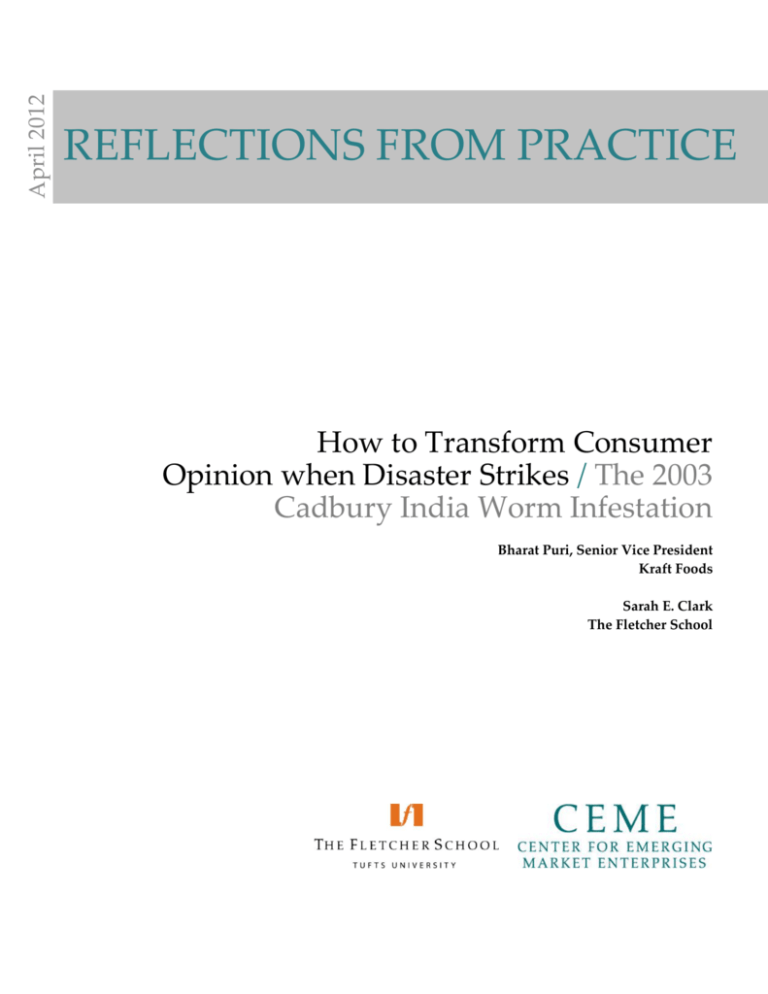
Related documents
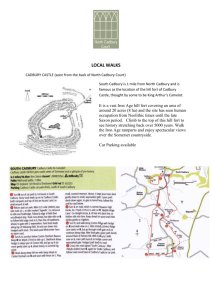
Add this document to collection(s)
You can add this document to your study collection(s)
Add this document to saved
You can add this document to your saved list
Suggest us how to improve StudyLib
(For complaints, use another form )
Input it if you want to receive answer

When crisis led to consumer safety: The story of cadbury
In the last quarter of 2003, just around the festival of Deepavali, some television channels flashed ‘breaking news’ – ‘ Insects found in Cadbury’s chocolates ’. Around the turn of the millennium, the era of 24X7 news channels had set in. This was one of the first occasions when such an established food brand was in the news for all the wrong reasons. Chocolate being kids’ favourite, and Cadbury being the market leader, the news created immense concern among parents. When the safety of an established food product is publicly doubted, it can create a crisis for the company. Indeed, consumers were deeply impacted, and Cadbury’s business was severely affected. So, did Cadbury’s chocolates really have insects in them? Was a multinational company established in 1824 in England no longer trustworthy?
Genesis of the Crisis
Every crisis has two sides of the story. Let me present both. While the media claimed that several customers found insects in Cadbury’s chocolates, during my interactions, the Cadbury’s Chairman shared the company’s version. A certain shop keeper in Mumbai who had apparently found an insect in a bar of Cadbury’s chocolate was the source of the crisis. The company believed that the bar may have been stored next to some flour or grains and the insect(s) might have crept into it. Instead of raising the matter with the company, the shopkeeper decided to make the matter public. Supposedly, the root of the problem was the shopkeeper’s disgruntlement with Cadbury. He had some personal grievances with the company staff about insufficient stocks and felt that this was the way to express his displeasure. So, he registered a complaint with the health inspector in the Government of Maharashtra.
The October 6, 2003 Food and Drug Administration (FDA) Dept. lab report on ‘insect infestations’ in the Cadbury chocolate bar was positive for the presence of two dead and one live insect. Consequently, the relevant authorities called a press conference and blew up the whole issue before the media. FDA had already seized the chocolate stocks from Cadbury’s Talegaon plant. In its defence, the company released an elaborate clarification statement underscoring the high-quality manufacturing processes followed at its plants, and that the poor storage at the retailer’s end was responsible for the reported case of worms in its chocolates. The FDA did not buy the argument and blamed the company for its poor packaging, which it believed was part of the manufacturing process. In the argument and counter argument between the government agencies and Cadbury that followed, the latter lost sales to the tune of nearly 45 percent at the peak of the festival season.
Proactive Crisis Management

A crisis of this magnitude has the power to threaten the existence of a food company. Readers would recollect the recent case (May 2015) of Maggi Noodles when it was reported that the noodles had up to 17 times the permissible limit of lead content. This was followed by a nationwide ban on Maggi’s noodle products. It was a quarter later, in August 2015, when the Bombay High Court struck down the ban and questioned the procedure followed during the original tests.
In Cadbury’s case, the fight was fought not in the legal courts but in the people’s court. At stake was the trust of three crore consumers who bought the company’s products every month giving it a 70 percent market share. To revive this eroded trust in the Cadbury brand and the safety of its products, the company decided on a multi-pronged strategy to bounce back with ‘ Project Vishwas ’.
Consumer Education
One of the key elements of Cadbury’s crisis management strategy was consumer education. Under Project Vishwas, it engaged with over 1,90,000 retailers that sold its products. The company proactively underscored Cadbury’s health conscious identity, and invited people to come and see its factories. When interested people came, including media, parents, and students, they were exposed to the rigorous system of quality checking followed on the premises before the products left the factory premises. The observers were convinced that there was nothing wrong in the manufacturing process and the factory ecosystem. The problem arose after the product left the factory. This helped convince customers and the media to some extent.
New Packaging

Image: Old Packaging in 1980s and 1990s
Having come face-to-face with a major crisis, Cadbury did not want to take any chances with consumer safety. It wanted to ring fence itself against likely problems in its wholesale and retail supply chain . Earlier, a Cadbury’s Dairy Milk bar used to be wrapped in a foil wrap, which was not sealed. The unsealed foil wrap was packed inside a paper which was open on both sides. This left the product vulnerable to mischief and mishandling. Cadbury decided to revamp the packaging of all its chocolate products. Through extensive discussions, it was decided that metallic poly-flow packaging would be most suitable to protect the product by completely sealing it. This nullified any chance of mismanagement at the retailer’s end. At a cost of over ₹15 crores, Cadbury imported machines that could heat seal the foil and achieve high standards of improvised packaging.

Image: New Packaging from 2004
This process also increased the cost of the product by about 15 percent. However, the company decided to absorb this expense, and did not hike the price of its chocolates. Cadbury’s Chairman Pal underscored the company’s conviction that the product must reach the consumer in the right condition, and if this costs additional money and substantial investment, it should be done.
Constant Communication

The highlight of Cadbury’s crisis management strategy was constant communication with the masses using the same platform that accentuated the crisis – media. In the consumers’ minds the image of Cadbury’s chocolates had been tarnished. It was natural for any parent to suggest to their children not to buy Cadbury’s chocolates. I recollect another crisis the company had faced a decade earlier when a Lucknow-based scientist claimed that his research revealed that there was ‘nickel’ in Cadbury’s chocolates. While the impact of media in 1993 wasn’t as loud as the 24X7 media of 2003. Yet, I remember my mother advising me (then studying in middle school) not to buy Cadbury’s chocolates! Parents are the biggest stakeholder in the purchase of products meant for kids. Cadbury had to address this vital stakeholder to win their confidence. In the first quarter of 2004, Cadbury increased its advertisement spending by over 15 percent. It roped in Bollywood superstar Amitabh Bachchan as its new brand ambassador. The immense popularity he enjoyed with the Indian masses helped the brand. His deep sonorous voice helped reassure the masses of the renewed measures taken by Cadbury for their and their kids’ safety and wellbeing. The outcome was slow yet positive. After six months of efforts, the demand for Cadbury’s chocolates started becoming normal.
Key Learnings

The consumers gave Cadbury another chance. Market studies indicated that consumers eventually considered the incident as a lapse and not an intentional betrayal of trust to harm consumers. Interestingly, public memory is short; especially for products that enjoy a strong emotional connect with target consumers. Cadbury’s chocolates had been a favourite since 1948 when its products first became available in India.
Nearly two decades later, hardly anyone recollects that Cadbury faced a crisis with its core and most popular product. However, in the current scenario of managing risks and averting crises, Cadbury’s approach of addressing the crisis with a multi-pronged strategy deserves a mention and emulation. Some marketing and PR experts hold the company partly responsible for ignoring the risk to product safety due to inadequate packaging, which could have been proactively addressed much ahead of time, thereby avoiding a crisis with deep financial and brand ramifications. Is it desirable for companies to take such avoidable risks till a crisis emerges? In fact, the best way to avert crises, is to proactively address risks that could cause a crisis.

A key learning from this episode is that a food and beverage company’s responsibility of product quality and safety does not end with the product leaving its factory. It continues till the product is consumed by the end-consumer. Hence, any product quality or consumer safety loopholes in the total value chain should be mapped and proactively addressed by the company.
Blog Author: Dr. Shashank Shah, SAI Fellow ’17, Harvard University, IRM India Affiliate Advisory Board Member.
This article was first published in ‘business world’ issue dated august 9-23, 2020..
When crisis led to environmental responsibility: The story of Hindustan Unilever

Consumer risks in e-commerce
You may also like.

Mitigating Fraud Risk in Payment Technologies with Enterprise Risk Management

What is Climate Finance and its role in risk mitigation?

Managing the risk of misinformation and fake news
Leave a reply cancel reply.
Your email address will not be published. Required fields are marked *
Save my name, email, and website in this browser for the next time I comment.
More in Risk 360

How Wedding Insurance can mitigate risks on an important day

Why do financial risk professionals also need to study Enterprise Risk Management (ERM)?

Why Pollution Risk is more severe than we imagine: Unseen consequences and systemic threats

Creating Early Warning Systems for Frauds through Enterprise Risk Management (ERM)

15 Tips to Ace an Enterprise Risk Management Interview

10 Careers for Commerce Students after Passing IRM’s Global Enterprise Risk Management Exams / Qualifications

10 Careers for Engineering Students after Passing IRM’s Global Enterprise Risk Management Exams / Qualifications
- Future of risks 6 Articles
- Risk 360 42 Articles
- Startups & SMEs 8 Articles
- Chief Risk Officers 6 Articles
- Risk in my Life 47 Articles
- Careers 43 Articles
Lost your password?
- Risk in my Life
- Chief Risk Officers
- Future of risks
- Startups & SMEs
Subscribe Us
Join our newsletter.
Enter your email to receive our newsletter.
Latest Posts
Riskviews: interaction with a veteran chief audit executive, 11 human capital risks chros need to watch out for and how to solve them, caught in a deep fake here are 7 risk mitigation strategies to get you out.
- Help & FAQ
Cadbury and the porcine DNA crisis
Research output : Chapter in Book/Report/Conference proceeding › Chapter (Book) › Other › peer-review
On 23 May 2014, Malaysian newspapers reported that samples of two Cadbury products in Malaysia, namely, Cadbury Dairy Milk Hazelnut and Cadbury Dairy Milk Roast Almond, tested positive for traces of porcine DNA by the Ministry of Health Malaysia. This was a serious issue in a country with a large number of Muslim consumers. As soon as the news came out, the Malaysian Department of Islamic Development suspended the halal certification of two Cadbury chocolate products that allegedly contained porcine DNA. This case study examines the issues and the response of the company to the crisis. It highlights the importance of the role of swift public relations in crisis management. It also highlights the fact that sustainable marketing is not just about profits and that companies need to take all stakeholders into account.
Publication series
- Brand management
- Crisis management
- Public relations
Access to Document
- 10.1007/978-3-030-10907-3_14
Other files and links
- Link to publication in Scopus
T1 - Cadbury and the porcine DNA crisis
AU - Ghazali, Ezlika M.
AU - Mutum, Dilip S.
AU - Md Radzi, Mardiana
AU - Woon, Wei Pin
N1 - Publisher Copyright: © 2019, Springer Nature Switzerland AG.
N2 - On 23 May 2014, Malaysian newspapers reported that samples of two Cadbury products in Malaysia, namely, Cadbury Dairy Milk Hazelnut and Cadbury Dairy Milk Roast Almond, tested positive for traces of porcine DNA by the Ministry of Health Malaysia. This was a serious issue in a country with a large number of Muslim consumers. As soon as the news came out, the Malaysian Department of Islamic Development suspended the halal certification of two Cadbury chocolate products that allegedly contained porcine DNA. This case study examines the issues and the response of the company to the crisis. It highlights the importance of the role of swift public relations in crisis management. It also highlights the fact that sustainable marketing is not just about profits and that companies need to take all stakeholders into account.
AB - On 23 May 2014, Malaysian newspapers reported that samples of two Cadbury products in Malaysia, namely, Cadbury Dairy Milk Hazelnut and Cadbury Dairy Milk Roast Almond, tested positive for traces of porcine DNA by the Ministry of Health Malaysia. This was a serious issue in a country with a large number of Muslim consumers. As soon as the news came out, the Malaysian Department of Islamic Development suspended the halal certification of two Cadbury chocolate products that allegedly contained porcine DNA. This case study examines the issues and the response of the company to the crisis. It highlights the importance of the role of swift public relations in crisis management. It also highlights the fact that sustainable marketing is not just about profits and that companies need to take all stakeholders into account.
KW - Brand management
KW - Crisis management
KW - Halal food
KW - Public relations
UR - http://www.scopus.com/inward/record.url?scp=85162219296&partnerID=8YFLogxK
U2 - 10.1007/978-3-030-10907-3_14
DO - 10.1007/978-3-030-10907-3_14
M3 - Chapter (Book)
AN - SCOPUS:85162219296
SN - 9783030109066
T3 - Management for Professionals
BT - Management of Shari’ah Compliant Businesses
A2 - Ghazali, Ezlika M.
A2 - Mutum, Dilip S.
A2 - Rashid, Mamunur
A2 - Ahmed, Jashim U.
PB - Springer
CY - Cham Switzerland
Defying a Reputational Crisis – Cadbury's Salmonella Scare: Why are Customers Willing to Forgive and Forget?
- In Practice
- Published: 17 April 2009
- Volume 12 , pages 64–82, ( 2009 )
Cite this article

- Conor Carroll 1
1519 Accesses
40 Citations
3 Altmetric
Explore all metrics
In late June 2006, Cadbury Schweppes, the world's largest confectionary company, had to recall seven of its branded products in the UK and Ireland due to the possible contamination with Salmonella Montevideo. Salmonella can cause a severe case of food poisoning, and leads to extensive diarrhea and vomiting. However, the food company had known of the possible contamination as early as January 2006, yet did not inform health authorities. The company was castigated in the media by the Food Standards Agency (FSA), and lambasted for their negligence. Only then did the company decide to issue a recall of over a million affected products. The company decided not to issue a recall in January as they felt there were only minute traces of salmonella present. Despite the FSA declaring Cadbury's products posing an ‘unacceptable risk to the public’, Cadbury's crisis management strategy to the food poisoning was counterintuitive to the traditional crisis management mantra of being open, honest and responsive. The handling of the crisis was at odds with current crisis management thinking. This crisis case study raises some very interesting questions and implications in the management of a food safety crisis and of crises in general. Does admission of guilt affect a firm's reputational integrity? Did short-term profit maximization objectives override long-term reputational objectives of the firm? Did the positive brand equity and favorable reputation of Cadbury's insulate the firm from the full impact of a crisis? Would others have survived such a scandal? Did the food contamination scare and the handing of it jeopardize the future of one of Europe's best-loved brands? What lessons can be learned for crisis management and reputation managers? Cadbury's market share quickly returned to pre-crisis levels, due to a number of reasons, but the long-term repercussions of the scare still reverberate around the image of Cadbury's.
This is a preview of subscription content, log in via an institution to check access.
Access this article
Price includes VAT (Russian Federation)
Instant access to the full article PDF.
Rent this article via DeepDyve
Institutional subscriptions
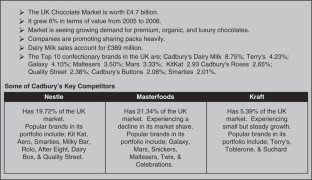
Similar content being viewed by others

Mass Salmonella Poisoning by the Peanut Corporation of America: State-Corporate Crime Involving Food Safety
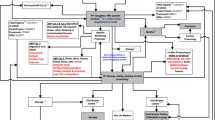
Four years post-horsegate: an update of measures and actions put in place following the horsemeat incident of 2013
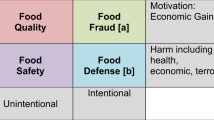
Global perspectives on food fraud: results from a WHO survey of members of the International Food Safety Authorities Network (INFOSAN)
ITN newscast, ‘Cadbury defends recall’, 24 June, 2006.
BBC radio interview with Todd Stitzer CEO of Cadbury Schweppes PLC, 2 August.
Source : www.cadburyschweppes.com/EN/MediaCentre/News/UK_product_recall_HTS.htm .
Source : Irwin Mitchell Solicitors website, press release ‘First legal action against Cadburys for suspected Salmonella poisoning considered’. URL: http://www.irwinmitchell.com/PressOffice/PressReleases/legal-action-cadburys-salmonella.htm .
Source : Cadbury Schweppes PLC Annual Report 2006.
Source : Transcript of Cadbury Schweppes 2006 Preliminary Results, Analyst Presentation, 20 February, 2007.
Allen, M.W. and Caillouet, R.H. (1994) ‘Legitimate endeavours: Impression management strategies used by an organization in crisis’, Communication Monographs, 61 (1), 44–62.
Article Google Scholar
Argenti, P. (2002) ‘Crisis communication: Lessons from 9/11’, Harvard Business Review, 80 (12), 103–119.
Google Scholar
Benoit, W.L. (1995) Accounts, Excuses, and Apologies – A Theory of Image Restoration Strategies, SUNY, New York.
Benoit, W.L., Gullifor, P. and Panici, D.A. (1991) ‘President Reagan's defensive discourse on the Iran-contra affair’, Communication Studies, 42, 272–294.
Benoit, W.L. and Hanczor, R.S. (1994) ‘The Tonya Harding controversy: An analysis of image repair strategies’, Communication Quarterly, 46 (4), 127–143.
Benoit, W.L. and Lindsey, J.J. (1987) ‘Argument strategies: Antidote to Tylenol's poisoned image’, Journal of the American Forensic Association, 23, 136–146.
Benson, J.A. (1988) ‘Crisis revisited: An analysis of strategies used by Tylenol in the second tampering episode’, Central States Speech Journal, 39 (1), 49–66.
Billings, R.S., Milburn, T.W. and Schaalman, M.L. (1980) ‘A model of crisis perception: A theoretical and empirical analysis’, Administrative Science Quarterly, 25 (2), 300–316.
Breecher, M. (1977) ‘Toward a theory of internal crisis behaviour – A preliminary report’, International Studies Quarterly, 22 (2), 39–74.
Brinson, S.L. and Benoit, W.L. (1996) ‘Dow Corning's image repair strategies in the breast implant crisis’, Communication Quarterly, 44 (1), 29–41.
Bromley, D.B. (1993) Reputation, Image and Impression Management, John Wiley & Sons, New York.
Coombs, T. and Schmidt, L. (2000) ‘An empirical analysis of image restoration: Texaco's racism crisis’, Journal of Public Relations Research, 12 (2), 163–178.
Coombs, T.W. (1999) ‘Information and compassion in crisis responses: A test of their effects’, Journal of Public Relations Research, 11 (2), 125–143.
Coombs, T.W. (2000) ‘Designing post-crisis messages: Lessons for crisis response strategies’, Review of Business, 21 (3/4), 37–42.
Coombs, T.W. and Holladay, S.J. (2001) ‘An extended examination of the crisis situations: A fusion of the relational management and symbolic approaches’, Journal of Public Relations Research, 13 (4), 321–340.
Coombs, W.T. (2007) ‘Protecting organization reputations during a crisis: The development and application of situational crisis communication theory’, Corporate Reputation Review, 10 (3), 163–176.
Covello, V.T. and Merkhofer, M.W. (1994) Risk Assessment Methods, Plenum Press, New York.
Darby, B.W. and Schlenker, B.R. (1982) ‘Children's reactions to apologies’, Journal of Personality and Social Psychology, 43 (4), 742–753.
D’Aveni, R.A. and MacMillan, I. (1990) ‘Crisis and the content of managerial communications: A study of the focus of attention of top managers in surviving and failing firms’, Administrative Science Quarterly, 35 (4), 634–657.
Elliott, D., Smith, D. and McGuinness, M. (2000) ‘Exploring the failure to learn: Crises and the barriers to learning’, Review of Business, 21 (3/4), 17–24.
Euromonitor (2006) European Confectionary Market, Euromonitor, London.
Faulkner, B. (2001) ‘Towards a framework for tourism disaster management’, Tourism Management, 22 (2), 135–147.
Fearn-Banks, K. (1996) Crisis Communications: A Casebook Approach, Lawrence Erlbaum Associates, Inc, Mahwah, NJ.
Fink, S. (1986) Crisis Management: Planning for the Inevitable, AMACOM: American Management Association, New York.
Fombrun, C. (1996) Reputation: Realizing Value from the Corporate Image, Harvard Business School Press, Boston, MA.
Frewer, L.J., Howard, C., Hedderley, D. and Shepherd, R. (1996) ‘What determines trust in information about food related risks?’ Risk Analysis, 16 (4), 473–486.
Garrett, D.E., Bradford, J.L., Meyers, R.A. and Becker, J. (1989) ‘Issues management and organizational accounts: An analysis of corporate responses to accusations of unethical business practices’, Journal of Business Ethics, 8 (7), 507–520.
Gundel, S. (2005) ‘Towards a new typology of crises’, Journal of Contingencies & Crisis Management, 13 (3), 106–115.
Hale, J.E., Dulek, R.E. and Hale, D.P. (2005) ‘Crisis response communication challenges’, Journal of Business Communication, 42 (2), 112–134.
Hearit, K.M. (1995) ‘From “We didn’t do it:” to “It's not our fault”: The use of apologia in public relations crises’, in W. N. Elwood (ed.), Public Relations Inquiry as Rhetorical Criticism, Praeger, Westport, CT, pp. 117–134.
Heath, R.L. (1994) Management of Corporate Communication: From Interpersonal Contacts to External Affairs, Lawrence Erlbaum, Hillsdale, NJ.
Heath, R.L. (2002) ‘Issues management: Its past, present, and future’, Journal of Public Affairs, 2 (4), 209–214.
Heath, R.L. (2006) ‘A rhetorical theory approach to issues management’, in C. L. Botan and V. Hazelton (eds.), Public Relations Theory II, Routledge, London, pp. 63–100.
Hermann, C.F. (1963) ‘Some consequences of crisis which limit the viability of organizations’, Administrative Science Quarterly, 8 (1), 61–82.
Hobbs, J.D. (1995) ‘Treachery by any other name: A case study of the Toshiba public relations crisis’, Management Communication Quarterly, 8 (3), 323–346.
Jaques, T. (2007) ‘Issue management and crisis management: An integrated, non-linear, relational construct’, Public Relations Review, 33 (2), 147–157.
Johnson, L. (2006) ‘The secrecy that left a bad taste in the mouth and spoilt a reputation’, Sunday Express, Issue, 10 July, p. 10.
Kovoor-Misra, S. (1995) ‘A multi-dimensionalapproach to crisis preparation for technical organizations; some critical factors’, Technological Forecasting and Social Change, 48 (2), 143–160.
Kovoor-Misra, S. (2002) ‘Boxed-in: Top managers’ propensities during crisis issue diagnosis’, Technological Forecasting and Social Change, 69 (8), 803–817.
Kovoor-Misra, S. and Nathan, M. (2000) ‘Timing is everything: The optimal time to learn from crises’, Review of Business, 21 (3/4), 31–37.
Lamertz, K., Martens, M.L. and Heugens, P.M. (2003) ‘Issue evolution: A symbolic interactionist perspective’, Corporate Reputation Review, 6 (1), 82–93.
Leake, J. and Walsh, G. (2006) ‘Chocolate bug cases spread’, The Sunday Times, Issue, 25 June, p. 8.
Loosemore, M. (1998) ‘Reactive crisis management in constructive projects – Patterns of communication and behaviour’, Journal of Contingencies & Crisis Management, 6 (1), 23–35.
Marcus, A.A. and Goodman, R.S. (1991) ‘Victims and shareholders: The dilemmas of presenting corporate policy during a crisis’, Academy of Management Journal, 34 (2), 281–305.
Meyers, G.C. and Holusha, J. (1986) When it Hits the Fan: Managing the Nine Crises of Business, Houghton Mifflin, Boston.
Mitroff, I.I. (1988) ‘Crisis management: Cutting through the confusion’, Sloan Management Review, 29 (2), 15–21.
Mitroff, I.I. and Alpaslan, M.C. (2003) ‘Preparing for evil’, Harvard Business Review, 81 (4), 109–115.
Muspratt, C. (2007) ‘Food Cadbury tastes 12pc profit cut as sales slump’, Daily Telegraph, Issue, 21 February, p.4.
O’Rourke, J. (2001) ‘Bridgestone/Firestone, Inc. and Ford Motor Company: How a product safety crisis ended a hundred-year relationship’, Corporate Reputation Review, 4 (3), 255–264.
Pauchant, T.C. and Mitroff, I.I. (1992) ‘Management by nosing around – Exposing the dangerous invisibility of technologies’, Journal of Management Inquiry, 1 (1), 70–78.
Pearson, C.M. (2002) ‘A blueprint for crisis management’, Ivey Business Journal, 66 (3), 69–73.
Pearson, C.M. and Clair, J.A. (1998) ‘Reframing crisis management’, Academy of Management Review, 23 (1), 59–76.
Pheng, L., Ho, D. and Ann, Y. (1999) ‘Crisis management: A survey of property development firms’, Property Management, 17 (3), 231–251.
Poulter, S. (2006) ‘Salmonella in Cadbury's bars; Chocolate giant orders a million bars to be cleared from shops’, Daily Mail, Issue, 24 June, p.1.
Schlenker, B.R. and Forsyth, D.R. (1980) ‘Effects of choice, responsibility, and anonymity on attitudes following attitude consistent behaviour’, Journal of Psychology, 105 (1), 75–83.
Schlenker, B.R., Pontari, B.A. and Christopher, A.N. (2001) ‘Excuses and character: Personal and social implications of excuses’, Personality & Social Psychology Review, 5 (1), 15–32.
Schnietz, K.E. and Epstein, M.J. (2005) ‘Exploring the financial value of a reputation for corporate social responsibility during a crisis’, Corporate Reputation Review, 7 (4), 327–345.
Shrivastava, P. and Mitroff, I.I. (1987) ‘Strategic management of corporate crises’, Columbia Journal of World Business, 22 (1), 5–11.
Shrivastava, P., Mitroff, I.I., Miller, D. and Miglani, A. (1988) ‘Understanding industrial crises’, Journal of Management Studies, 25 (4), 285–303.
Slovic, P. (2000) The Perception of Risk, Earthscan, London.
Smith, D. (1990) ‘Beyond contingency planning: Towards a model of crisis management’, Industrial Crisis Quarterly, 4 (4), 263–275.
Smith, D. (2006) ‘Crisis management – practice in search of a paradigm’, in D. Smith and D. Elliott (eds.), Key Readings in Crisis Management: Systems and Structures for Prevention and Recovery, Routledge, London, pp. 1–12.
Smudde, P. (2001) ‘Issue or crisis: A rose by any other name’, Public Relations Quarterly, 46 (4), 34–36.
Snyder, L. and Foster, L.G. (1983) ‘An anniversary review and critique: The Tylenol crisis’, Public Relations Review, 9 (3), 24–34.
Stead, E. and Smallman, C. (1999) ‘Understanding business failure: Learning and unlearning lessons from industrial crises’, Journal of Contingencies and Crisis Management, 7 (1), 1–18.
Tait, N. and Wiggins, J. (2007) ‘Cadbury in record Pounds 1m fine for unsafe chocolate’, Financial Times, Issue, 17 July, p. 2.
Tucker, L. and Melewar, T.C. (2005) ‘Corporate reputation and crisis management: The threat and manageability of anti-corporatism’, Corporate Reputation Review, 7 (4), 377–387.
Weiner, B., Graham, S., Peter, O. and Zmuidinas, M. (1991) ‘Public confession and forgiveness’, Journal of Personality, 59 (2), 281–312.
Download references
Author information
Authors and affiliations.
Department of Management and Marketing, Kemmy Business School, University of Limerick, Limerick, Ireland
Conor Carroll
You can also search for this author in PubMed Google Scholar
Rights and permissions
Reprints and permissions
About this article
Carroll, C. Defying a Reputational Crisis – Cadbury's Salmonella Scare: Why are Customers Willing to Forgive and Forget?. Corp Reputation Rev 12 , 64–82 (2009). https://doi.org/10.1057/crr.2008.34
Download citation
Published : 17 April 2009
Issue Date : 01 March 2009
DOI : https://doi.org/10.1057/crr.2008.34
Share this article
Anyone you share the following link with will be able to read this content:
Sorry, a shareable link is not currently available for this article.
Provided by the Springer Nature SharedIt content-sharing initiative
- reputation risk
- Find a journal
- Publish with us
- Track your research
Academia.edu no longer supports Internet Explorer.
To browse Academia.edu and the wider internet faster and more securely, please take a few seconds to upgrade your browser .
Enter the email address you signed up with and we'll email you a reset link.
- We're Hiring!
- Help Center

Cadbury Malaysia Porcine DNA Case: Lessons from Crisis Management and Cultural Perspectives

2020, Malaysian Journal of Social Sciences and Humanities
Crises are inevitable and it can be happened at any point of the organization process. Thus, it is worthwhile for the organization to identify the early plan of issue or potential risk occurring within organizations as it is not easy to win the reputation warfare. Thus, this paper aims to review the Cadbury Porcine DNA case that happened in Malaysia from the perspective of crisis management and cultural approaches. The discussion of the case surrounded on the chronology of the case, crisis communication and management strategies carried out by Cadbury and lessons learned from it. This has called upon the management, especially the public relations or corporate communication department to look into it to form a strategic solution to safeguard the organization's reputation when the crisis strike.
Related Papers
Sage Advance, Social Sciences and Humanities
kasirye faiswal , Math Kreya
The purpose of this study is to assess the 2014 Cadbury controversy through the framework of the Theory of planned behavior. The study examined how Cadbury IMC campaign changed the attitudes, behaviors and the perceived behavioral control of the audience towards purchasing Cadbury chocolates. Content analysis was employed to analyze the Cadbury IMC video campaign that circulated widely during the saga in addition to the Cadbury social platforms that aided in data collection. Themes like Quality standards, halal certification, ingredients and supervision were generated from the data. The analysis of the data discovered, that Cadbury tried to involve the public while trying to resolve their halal certification issues as well as those related to the two bars that were in question. A number of issues were discovered in relation to TPB however, the study found out that there were underlying factors missing in most of the Cadbury campaigns carried out during the 2014 PIG DNA saga. So the government should consider establishing stringent mechanisms of controlling hala certification among Malaysian companies and those seeking to do business in the country at large.
suci maharani
asmak husin , nurhafilah musa
The Cadbury Controversy in May 2014 has resulted a lot response from various quarters. Although the issue ended with Cadbury as the winner, there are many blessings and lessons to be learned by Malaysians and Malaysian authorities in this issue. This paper provides a brief chronology of the events ensuing the Cadbury controversy based on the media reports and identify some lessons that can be learned from the controversy so that it can be avoided in the future.This paper also reflects on the outcome of a study on the knowledge, understanding, acceptance and perception of Malaysians towards the federal system and connects the findings of the study with the society’s confusion on the issue of halal certification and enforcement in Malaysia. This connection between the Cadbury controversy and Malaysian federal system because the administration of halal certification and enforcement closely relates to the federal system in place.This paper concludes that the relevant departments in charge of administration of halal certification and enforcement need a stronger cooperation and coordination in order to win public confidence consuming halal products. Any non-compliance should be dealt with the food manufacturer directly so as not to cause unnecessary confusion to the public. Although the level of knowledge, understanding and acceptance of Malaysians towards the federal system is high, about 60 percent, the Cadbury controversy reveals that many Malaysians are still confused about how halal certification and enforcement are administered in the Malaysian federal system.
Malaysian Journal of Law and Society
The term “Halal Laws” in this paper relate to the laws of consumer protection in terms of Halal product. Halal laws are crucial, since it regulates an industry that is worth an estimated of USD 2.3 trillion, annually. The Halal laws in Malaysia are a national, legislated law. Meanwhile, the United States of America (USA) also have Halal laws, but it is legislated on a state level. Not all states recognise the Halal laws in the USA. Alternatively, the Netherlands do not have Halal laws or Halal related laws. Therefore, local Muslims depend on the integrity of local Halal certifier for Halal foods. This paper summarises the Halal laws differences in these 3 countries including Halal laws offenses and penalties. This paper also summarises the challenges of implementing the Halal laws in these three countries.
Morven McEachern
Businesses are increasingly embracing corporate citizenship strategies. However, the empirical literature surrounding consumer responses to such practices, features many contradictions concerning their impact. As a result, many businesses are uncertain about the extent to which they should commit resources to these activities to influence a positive response from consumers. Therefore, this paper seeks to address this gap by exploring consumers’ awareness of varying levels of corporate citizenship activities and assess their moral responses to such efforts. Using a combination of qualitative methods and projective techniques with a broad cross-section of twenty consumers, the results help to shed light on the impact of corporate citizenship activities upon moral recognition, consumer decision-making and choice.
Hadi Akbar , Norrakiah Abdullah Sani
The term " Halal Laws " in this paper relate to the laws of consumer protection in terms of halal product. Halal laws are crucial, since it regulates an industry that is worth an estimated of USD 2.3 trillion, annually. The Halal laws in Malaysia have been legislated for the past 40 years; from humble beginnings (Trade Description Order 1975), to standardization (MS 1500:2009) and current law (Trade Description Act 2011). However, not all countries legislate Halal laws. Some countries adopt private Halal laws which focus on Halal certification and were operated by private institutions rather than government institution. This paper intends to summarize briefly the development of the Halal laws in three countries; Malaysia (government legislated laws), Netherlands and United States (Private laws). This includes comparison between the legislated Halal laws and private Halal laws that exists globally.
Farrah Dina Yusop , Amir Heidi Askomi , Farrah Yusop
Halal food is a concept governed by the Islamic law with the purpose of encouraging healthy lifestyle. The terms and regulations are derived from the holy Al-Quran, where it has been practice for centuries to count. Among Muslims, issues such as misconceptions, trust and counterfeiting Halal logo are some of the worrying topics that are critical to be addressed. Non-Muslims, on the other hand, perceived halal as a religious concept rather than a health-related concern. Educating consumers is the best way to combat the misconceptions. Unfortunately, research reviewing the current status of halal conceptions and consumptions among Muslim and non-Muslims consumers are insufficient. This study bridging the gaps by reviewing the current status of halal scene in Malaysia and explore the conception as well as the misconceptions held by both Muslims and non-Muslims regarding the halal food industry. Finally it proposes the use of mobile application as an efficient learning environment to educate and assist consumers' understanding of halal concept.
Journal of Islamic Studies
Kirsten Hemmy
The paper outlines halal certification reliability and consumer attitude towards it generally. It reveals some of the issues the halal industry faces in terms of its credibility. As difficulties to develop halal certification standards persist even with conventional food stuffs, the paper goes on to question the possible integration of genetically modified food (GMF) into the halal market. It investigates different Islamic legal mechanisms and their suitability to evaluate GMF and its halal status. The paper then sheds some light on the GMF marketplace and the need for labelling from a consumer rights perspective. It concludes that the Muslims' global purchasing power should translate into more influence taking with regard to more Islamically compliant production, processing and labelling on a wider scale.
Mohd Anuar Ramli , Muhammad Izzul Syahmi Zulkepli
Kemajuan dalam teknologi maklumat dan komunikasi (ICT) telah memberi kesan terhadap perubahan gaya hidup manusia. Gabungan antara kecanggihan teknologi gajet dan capaian jalur lebar telah memudahkan urusan interaksi harian manusia sama ada dalam bentuk audio mahupun visual. Implikasinya, tiap maklumat dapat disebarkan dengan pantas lagi tuntas. Kebelakangan ini, fenomena penularan dan perkongsian maklumat makin menjadi tren dalam kalangan pengguna media sosial baharu. Ia melibatkan pelbagai kategori maklumat, antaranya berita jenayah, tragedi, kemalangan, malah ada juga unsur tokok tambah dan pemalsuan. Situasi ini tidak terkecuali tempiasnya kepada industri halal. Dalam kerancakan pertumbuhan ekosistem halal lokal dan global, terdapat juga anasir-anasir negatif yang mengganggu-gugat. Wujud segelintir pengguna media sosial yang menyebarkan maklumat halal palsu terutamanya melibatkan elemen haram dan najis umpama khinzir dan deravatifnya, alcohol dan seumpamanya. Ia bukan sahaja melibatkan serangan terhadap sesuatu produk semata-mata, malah menimbulkan implikasi terhadap para pengguna, pengusaha industri dan pihak autoriti halal. Sehubungan itu kajian ini membincangkan tentang penularan maklumat palsu berkaitan dengan produk halal dalam pasaran, medium penularan serta kesannya terhadap industri halal. Selain itu, kajian ini turut menjelaskan pandangan Islam terhadap penularan maklumat tersebut berdasarkan hujah daripada al-Quran dan al-Sunnah. Untuk mencapai objektif tersebut, pengkaji mengaplikasikan kajian kepustakaan dengan meneliti literatur yang berkaitan sama ada dari laman web, akhbar, serta bahan bercetak seperti buku dan artikel jurnal. Data kualitatif ini dianalisis secara induktif untuk merumuskan dapatan kajian. Hasil kajian mendapati, isu-isu halal yang palsu ini disebarkan tanpa penelitian yang khusus dan menimbulkan kesan negatif kepada pihak-pihak. Justeru kajian juga mencadangkan kriteria penapisan maklumat berteraskan syariat Islam agar isu yang tidak tepat ini dapat ditangani dengan baik dalam masyarakat Islam di Malaysia khususnya dan serantau umumnya di samping pertumbuhan industri halal mampu berkembang dengan pesat.
Uluslararası İktisadi ve İdari İncelemeler Dergisi
Assoc. Prof. Dr. Duygu HIDIROGLU
This paper provides analysis on Cadbury, Inc and confectionery industry. The paper analyzes the external and internal forces affecting the company, the industry it operates and its business level strategy. Further, it gives detailed information about the SWOT analysis of the company. Considering the situational features such as opportunities and threats when designing the environmental analysis and making realistic marketing plan is very crucial because a company will benefit from its own strengths, eliminate its weaknesses, benefit from environmental opportunities and protect itself from environmental threats. On the simple basis of product quality and taste, Cadbury proves to be superior to other commercially available chocolate even with the seeming similarities in texture. This paper deals with two main research flows: environmental analysis and situational factors which allows organizations to compose a realistic and effective marketing plan. This study provides a framework that implement a common consensus on these research flows by specifiying some important issues for future research and by making effective strategy analysis in the confectionery industry. ŞEKERLEME ENDÜSTRİSİNE YÖNELİK STRATEJİK PLANLAMA SÜRECİNDE DURUM ANALİZİ UYGULAMASI: CADBURY, A.Ş. ÖRNEĞİ Ö z Bu çalışma, Cadbury A.Ş. ve şekerleme endüstrisi analizlerini kapsamaktadır. Çalışma, SWOT analizi yardımıyla Cadbury A.Ş.'nin içinde bulunduğu sektörü ve işletme düzeyinde stratejileri etkileyen dış ve iç kuvvetleri analiz etmektedir. Çevrenin analizi ve şirketin pazarlama planı tasarlanırken durumsal faktörler göz önünde bulundurulduğu gözlenmiştir. Cadbury A.Ş.'nin örgütsel bağlamda sahip olduğu güçlü yönlerden faydalanırken; zayıf yönlerin olumsuz etkilerini en aza indirgemeye yönelik çeşitli stratejiler kurduğu görülmüştür. Şirketin bu stratejileri, pazar fırsatlarından yararlanmasına ve herhangi bir tehditten kaçınmasına fayda sağlayacağı için oldukça önemlidir. Cadbury A.Ş.'nin ürünleri yüksek fiyatla ithal edilen atıştırmalık ve yiyeceklere kıyasla daha uygun fiyatlı ve eşit derecede rekabetçi bir alternatiftir. Cadbury A.Ş.'nin şirket stratejilerinin aynı sektörde yer alan diğer şirketlerden daha üstün ve başarılı olduğu sonucuna ulaşılmıştır. Çalışma, şirketi etkileyen dış güçleri, bulunduğu sektörü ve şirketin çevresini analiz etmektedir. Böylelikle şekerleme endüstrisinin geleceği hakkında gerçekçi öngörüler sunulmakta ve sektörün dinamikleri hakkında önemli bilgilere ulaşılmaktadır. Bu çalışma gelecekteki araştırmalara şekerleme endüstrisindeki firmaların çevresel analizi için önemli alanları vurgulayan kavramsal bir çerçeve sunmaktadır.
RELATED PAPERS
Tyara Choerunnisa
Food Additives and Contaminants - Part A Chemistry, Analysis, Control, Exposure and Risk Assessment
M. A. Motalib Hossain
Food Analytical Methods
Subha Bhassu
Health promotion international
Tara Boelsen-Robinson
siti zanariah yusoff , Nazilah Mohamad
IDMAC e-proceeding
Ahmad Nazrul Alif
Pertanika J. Soc. Sci. & Hum. 27 (3): 1787 - 1799
Aiedah Khalek
e-proceeding
Ahmad Nazrul Alif , najwa nans
Alina Abdul Rahim
International Journal of Modern Trends in Business Research
Muhammad Tahir Jan
Jaroslaw Ignacy
Journal of Islamic Philanthropy & Social Finance (JIPSF)
Nur Iman Hashim
Graeme Domm
Afizan Amer
Robabeh Zabihzadeh
Mohd Sallehhudin Abd Aziz
International Marketing Review
Stephen Wilkins
NEELATPHAL CHANDA
Siti Hawa Radin Eksan
Habiba Chaabouni , Jenny Schreiber , Markus Loewe , Aasim I Padela , Lela Mansor , Omar Fassatoui , Azizan Baharuddin
PROSIDING SEMINAR PENYELIDIK MUDA 2018
Wan Mohd Fazrul Azdi Wan Razali
Devanshi Agarwal
Tajul Ariffin Masron
FBM INSIGHTS Faculty of Business and Management, Universiti Teknologi MARA Cawangan Kedah
Nazirul Mubin Mohd Noor
Norrakiah Abdullah Sani , Hadi Akbar
THE 14th INTERNATIONAL CONFERENCE ON KNOWLEDGE-BASED ECONOMY AND GLOBAL MANAGEMENT Tainan, TAIWAN
Chiannie Cheong
Asia Pacific Public Relations Journal
SYED ARABI BIN SYED ABDULLAH IDID Idid
J . A. R . C . Sandaruwani
Anis Najiha
Hadi Akbar , Norrakiah Abdullah Sani , Alina Abdul Rahim
IQTISHODUNA Jurnal Ekonomi Islam
azreen hamiza abdul aziz
RELATED TOPICS
- We're Hiring!
- Help Center
- Find new research papers in:
- Health Sciences
- Earth Sciences
- Cognitive Science
- Mathematics
- Computer Science
- Academia ©2024

COMMENTS
Cadbury Crisis Management Case Study: Preserving Trust in Times of Crisis. Tahir Abbas May 28, 2023. In the realm of beloved chocolate brands, Cadbury has long held a cherished place in the hearts and taste buds of consumers worldwide. However, even the most esteemed companies are not immune to crises that can pose significant threats to their ...
Case Study: Cadbury Crisis Management (Worm Controversy) In India chocolate consumption was very low in the early 90's but as the decade advanced the consumption drastically increased. The late 90's witnessed a good chocolate market condition. The chocolate market in India is dominated by two multinational companies — Cadbury and Nestle.
Case Study: Cadbury Crisis Management (Worm. Controversy) - MBA Knowledge Base. [online] MBA Knowledge Base. Source: SIMCON Blog. 2016. Cadbury : Case Study Analysis.
Chapter PDF Available. Crisis communication. Case study: Cadbury worm controversy. December 2020. DOI: 10.2478/9788395815065-004. License. CC BY-NC-ND 4.0. In book: 11th International Conference ...
As a result of these efforts, Cadbury managed to turn a potential disaster into a story of successful crisis management. Sales eventually rebounded, and the brand's image was restored. The worm infestation incident became a case study on overcoming adversity through strategic action and strong leadership. Conclusion
The way of conducting communication during the image crisis is a special type of challenge for the company. Lack of preparation of the company for proper communication management may be crucial in averting and/or reducing the effects of crises. The paper presents the results of research conducted among experts from the PR industry and ...
Cadbury ' s crisis management strategy to the food poisoning was counterintuitive to the tra-ditional crisis management mantra of being open, honest and responsive. The handling of the crisis was at odds with current crisis man-agement thinking. This crisis case study raises some very interesting questions and implica-
its crisis, were also established. In order to conduct the research case study was used as a method, and the necessary information about the crisis situation was gathered while analysing and consulting websites that addressed the subject and articles published online by various news channels such as BBC or The Times of India.
DOI: 10.2478/9788395815065-004 Corpus ID: 238108967; Crisis communication. Case study: Cadbury worm controversy @article{Coman2020CrisisCC, title={Crisis communication. Case study: Cadbury worm controversy}, author={Claudiu Coman and Victor-Alexandru Briciu and Cristel Ioțu and Maria Cristina Bularca and Denisa Alexandra Anghel}, journal={11th International Conference on Information Science ...
Case Study: Cadbury Crisis Management (Worm Controversy) - MBA Knowledge Base. [online] MBA Knowledge Base. PRE-CONDITIONS OF CADBURY CRISIS . Chocolate is a nourishment item that requires ...
In 2003, Cadbury India faced a media onslaught and plummeting sales brought on by reports of worms. in some of its chocolate bars. Even though the problem was isolated to storage at the retail level. (out of Cadbury's direct control), the company needed to respond to the crisis, and fast.
Hence, this paper aims to review the Cadbury Malaysia porcine DNA case from the viewpoint of crisis management and cultural lens. This discussion of the paper will focus on the chronology of the case, crisis management and communication strategies done by Cadbury. Lastly, this paper recommends some. and communication.
The document summarizes a case study about a crisis Cadbury faced in India in 2003 when worms were found in some bars of their flagship Dairy Milk chocolate brand. This led to a major drop in sales and negative publicity. Cadbury launched an intensive communications program to rebuild trust with consumers, retailers, and employees. This included emphasizing that the issue was due to storage ...
Proactive Crisis Management. A crisis of this magnitude has the power to threaten the existence of a food company. Readers would recollect the recent case (May 2015) of Maggi Noodles when it was reported that the noodles had up to 17 times the permissible limit of lead content. This was followed by a nationwide ban on Maggi's noodle products.
Keywords: crisis communication strategies, organizational communication, public relations, Cadbury, McDonalds. Please cite the article as follows: Telang, A. and Deshpande, A. (2016), "Keep calm and carry on: A crisis communication study of Cadbury and McDonalds", Management & Marketing. Challenges for
What Cadbury's set out to deliver, it goofed up once but it seemed to be very sincere in its intent to get things right." Even so, other experts felt Cadbury's was itself to blame for the worm crisis.
This was a serious issue in a country with a large number of Muslim consumers. As soon as the news came out, the Malaysian Department of Islamic Development suspended the halal certification of two Cadbury chocolate products that allegedly contained porcine DNA. This case study examines the issues and the response of the company to the crisis.
Cadbury Porcine DNA case that happened in Malays ia from the perspective of crisis management and. cultural approaches. The discussion of the case surrounded on the chronology of the case, crisis ...
Cadbury decided to address the concerns and face the situation head-on. Gone are the days where a brand could hope for this to die a natural death and wait for consumers to move on.
Cadbury's crisis management strategy to the food poisoning was counterintuitive to traditional crisis management mantra of being open, honest and responsive. ... 1983); however, there are relatively few other crisis management case studies highlighting the dynamics of crises and organizational image repair strategies in the aftermath of a ...
The discussion of the case surrounded on the chronology of the case, crisis communication and management strategies carried out by Cadbury and lessons learned from it. This has called upon the management, especially the public relations or corporate communication department to look into it to form a strategic solution to safeguard the ...
Th is paper is focused on the comparative study of the communication approaches followed by Cadbury. and McDonalds du ring a period when the companies were dealing with a crisis. The fi ndings of ...
A literature review and a single case study design was selected, Cadbury Malaysia and the Malaysian Government (from February to July 2014), in response to a crisis that occurred when chocolate ...